Phortse Village, located in the Khumbu region of Nepal, is a hidden gem with natural beauty, rich culture, and unparalleled adventure. Situated at 3,840 meters, the village is a tranquil haven surrounded by the majestic peaks of the Himalayas. It is home to around 350 people, primarily Sherpas, known for their legendary mountaineering skills and warm hospitality.
Walking through Phortse, you encounter bhattis (traditional stone houses) and vibrant prayer flags that add splashes of color against the harsh mountain backdrop. It is a hidden gem that offers a unique travel experience, allowing visitors to immerse themselves in the daily life of the Sherpa people, and learn about their customs, traditions, and connection to the mountains.
This journey supports local economies and preserves cultural heritage, fostering mutual respect and understanding. It offers unparalleled natural beauty, rich cultural experiences, and unique trekking opportunities. Its forests are alive with nature sounds, home to rare species like the Himalayan tahr and snow leopard.
Khumbu Climbing Center (KCC)
Khumbu Climbing Center (KCC) in Phortse has offered technical climbing training for over 19 years, focusing on ice climbing. Established in 2003, the Khumbu Climbing Center (KCC) teaches technical techniques, English language, mountain safety, rescue, and outdoor first aid for two weeks each winter.
The center, run by the Alex Lowe Charitable Foundation, is ideal for beginners and seasoned climbers. The Khumbu Climbing Center (KCC) is a Nepalese training facility in Phortse Village, Nepal, promoting safe climbing practices and mountaineering skills among Sherpa and Nepali climbers.
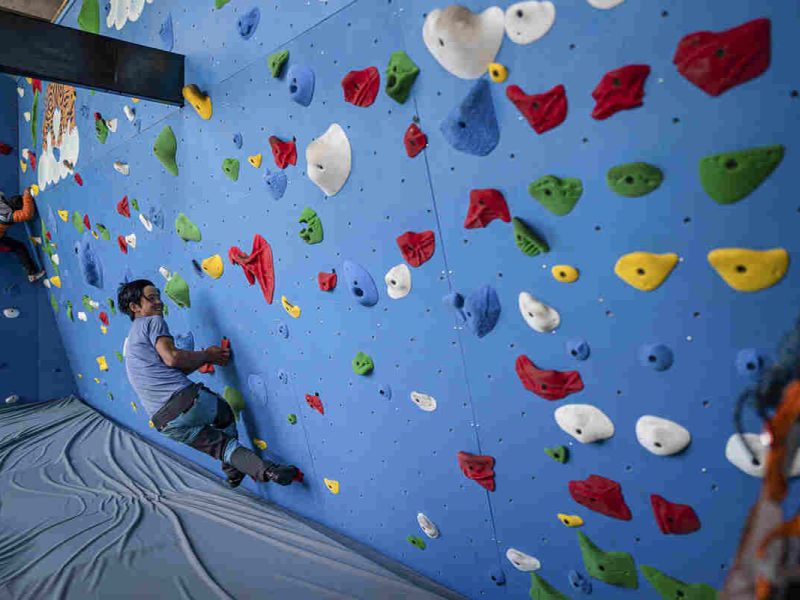
Established to provide comprehensive training in technical climbing skills, safety protocols, and mountain rescue techniques, the center offers a variety of courses tailored to different skill levels and interests. It also contributes to the local economy and cultural preservation by providing Sherpa instructors and support staff employment opportunities.
The KCC collaborates with international mountaineering organizations to enhance its programs and facilities. The center continues to inspire and educate climbers worldwide while preserving Sherpa heritage and fostering sustainable mountaineering practices.
Festivals Celebrated By the People of Phortse Village
Phortse Village, nestled in the Himalayas of Nepal, celebrates several festivals throughout the year that are deeply rooted in Sherpa culture and tradition. These festivals are occasions of joy, spirituality, and communal unity.
1. Mani Rimdu Festival
Mani Rimdu is one of the most important festivals celebrated in Phortse Village and other Sherpa communities. It spans several days and usually falls in autumn, following the Tibetan lunar calendar.
The festival combines religious ceremonies with vibrant cultural performances, including masked dances (cham), which depict Buddhist teachings and stories. Monks from the local monastery perform rituals to bestow blessings and cleanse the community of obstacles.
2. Losar (Sherpa New Year)
Losar marks the beginning of the Sherpa New Year and is celebrated with great enthusiasm in Phortse Village. It usually occurs in February or March, depending on the lunar calendar.
Villagers engage in purification rituals, including cleaning their homes and monasteries and making offerings to deities for auspicious beginnings. Families come together to enjoy traditional meals, exchange gifts, and participate in dance and music performances.
3. Dhumji Festival
Dhumji is another significant festival observed in Phortse Village, typically occurring in late spring or early summer. It commemorates the birth, enlightenment, and Parinirvana (death) of Lord Buddha.
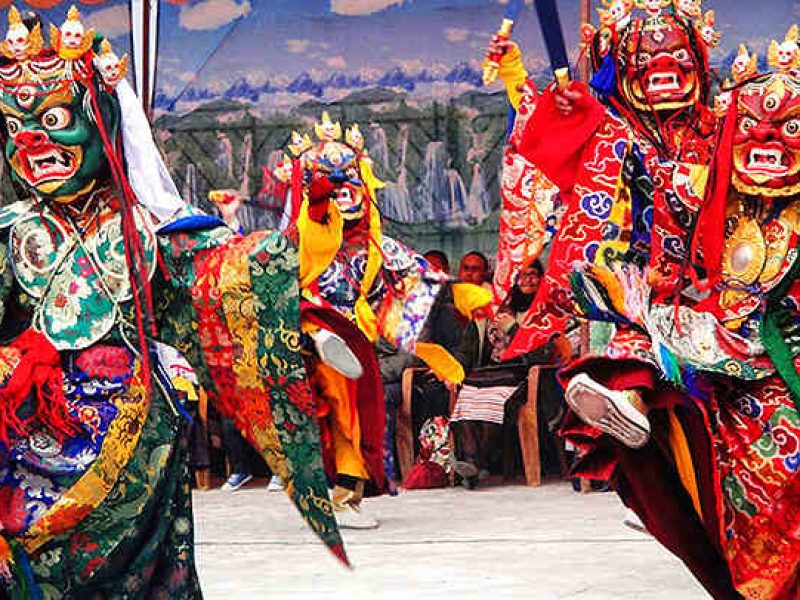
The festival involves elaborate ceremonies at the monastery, where monks perform sacred rituals and cham dances to dispel negativity and bring prosperity to the community. Villagers join in processions, wearing traditional attire and sharing festive meals.
4. Saga Dawa
Saga Dawa is a Buddhist festival celebrated during the fourth month of the Tibetan lunar calendar, usually in May or June. In Phortse Village, villagers gather to circumambulate the local monastery, carrying prayer wheels and chanting prayers for the well-being of all sentient beings.
The festival honors the birth, enlightenment, and death of Lord Buddha, emphasizing compassion and altruism through acts of kindness and generosity.
5. Tsechu (Local Festivals)
In addition to these major festivals, Phortse Village may observe local Tsechu festivals, which are specific to certain monasteries or regions within the Everest region.
These festivals vary in their timing and rituals but generally include religious ceremonies, cultural performances, and social gatherings that strengthen community ties and preserve Sherpa heritage.
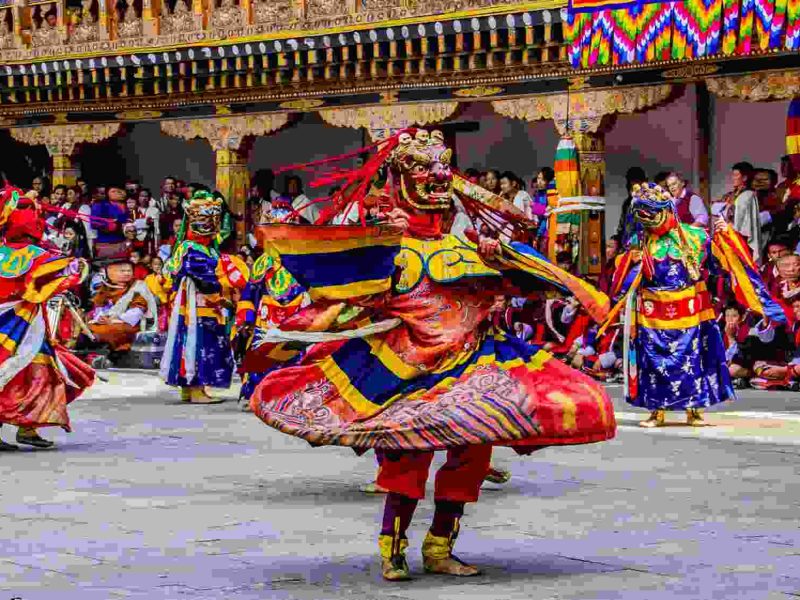
These festivals play a vital role in preserving Sherpa culture, passing down traditions to younger generations, and fostering unity among the people of Phortse Village amidst the awe-inspiring backdrop of the Himalayas.
The Food In Phortse Village
In Phortse Village, food reflects the simplicity and warmth of Sherpa culture. Visitors can enjoy a variety of dishes that are hearty, nutritious, and locally sourced:
- Dal Bhat: A staple dish consisting of rice (bhat) served with lentil soup (dal), usually accompanied by vegetables, pickles, and sometimes meat or fish. It provides essential energy for trekkers and is enjoyed for its comforting flavors.
- Sherpa Stew: Known as thukpa, this hearty noodle soup is made with vegetables, meat (often yak or chicken), and fragrant spices. It warms the body and is perfect after a long day of trekking in the Himalayas.
- Momos: Steamed dumplings filled with meat or vegetables, served with spicy dipping sauces, are a favorite snack in the Everest region.
- Tsampa: Traditional Sherpa dish made from roasted barley flour, eaten as porridge with butter and sugar or mixed with tea for a nutritious meal option.
- Yak Cheese: Produced locally, yak cheese (chhurpi) is a popular snack or ingredient in dishes. It has a distinct flavor and is often served with crackers or added to soups for added richness.
- Butter Tea: Known as suja or po cha, butter tea is a traditional Tibetan beverage enjoyed by Sherpas. It consists of brewed tea mixed with salt and butter, providing warmth and energy in the cold mountain climate.
- Local Produce: Fresh vegetables grown in the region, such as potatoes, carrots, and leafy greens, feature prominently in Sherpa cuisine. These ingredients are used in various dishes to complement the main staples.
- Baked Goods: Some tea houses and lodges in Phortse Village bake fresh bread, rolls, and pastries daily. These items are often served with jam or honey and are a comforting treat during breaks from trekking.
Dress Of The People Of Phortse Village
Phortse Village in Nepal’s Himalayas wears traditional attire, reflecting their cultural identity and practical needs in mountainous terrain. Men wear a bura, a knee-length robe, and Chhuba jacket, secured with a kamarband sash. Women wear a Bakhu, a long-sleeved dress with embroidery, and a colorful apron called that.
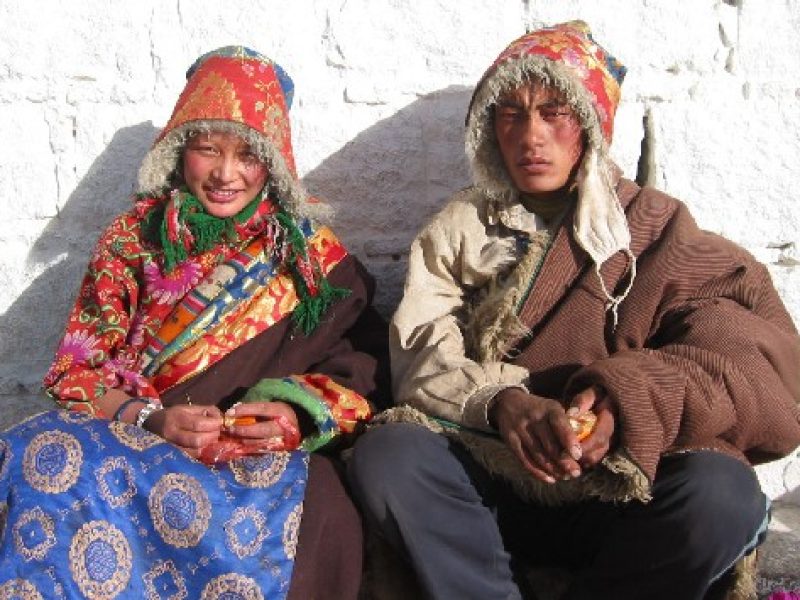 They also wear sturdy boots or shoes for trekking. During festivals and ceremonies, they add decorative elements like turquoise stones and ornate silver jewelry. The attire is both culturally significant and practical, providing warmth and protection against harsh conditions. It symbolizes Sherpa tradition and craftsmanship in the Everest region.
They also wear sturdy boots or shoes for trekking. During festivals and ceremonies, they add decorative elements like turquoise stones and ornate silver jewelry. The attire is both culturally significant and practical, providing warmth and protection against harsh conditions. It symbolizes Sherpa tradition and craftsmanship in the Everest region.
Unique Trekking Opportunities On Phortse Village
Phortse Village offers a unique experience that combines breathtaking scenery, challenging trails, and authentic Sherpa culture. This village is part of the iconic Everest Base Camp trek, but it also serves as a gateway to several alternative routes that showcase the region’s less-explored beauty.
One of the most rewarding aspects of trekking around Phortse is the variety of trails available. From easier walks suitable for beginners to challenging routes for seasoned hikers, there’s something for everyone.
The trails wind through lush forests of rhododendrons and pine, offering spectacular views of towering peaks like Ama Dablam and Mount Everest. The journey is not just about reaching the destination; it’s about immersing yourself in the serene, untouched nature along the way.
Phortse Village offers a unique trekking experience that combines natural beauty, cultural richness, and thrilling adventure. The quieter routes and less crowded routes allow for a genuine connection with the surroundings.
The village also offers activities like rock climbing and ice climbing, with the Khumbu Climbing Center providing training and opportunities for climbers. The valleys around Phortse are treasure troves, offering unique charms like glacial lakes and rare wildlife sightings.
Trekking in Phortse is not just a physical journey; it’s a cultural and spiritual adventure, with trails dotted with mani stones and prayer flags reflecting the deep-rooted Buddhist beliefs of the Sherpa people. Phortse Village is a must-visit destination for its stunning natural beauty and rich cultural experiences.
What To Do In Phortse Village?
Phortse Village offers a range of activities and experiences for travelers seeking to involve themselves in the beauty and culture of the Everest region:
- Explore Sherpa Culture: Interact with the friendly Sherpa community and learn about their traditions, customs, and way of life. Visit local homes and monasteries to gain insights into their rich cultural heritage.
- Hiking and Trekking: Embark on scenic hikes and treks around Phortse Village. Trails lead to panoramic viewpoints overlooking Ama Dablam and other Himalayan peaks. Explore nearby valleys, forests, and high-altitude lakes for breathtaking natural beauty.
- Visit Tengboche Monastery: Take a short trek to Tengboche Monastery, attend morning prayers, and soak in the spiritual atmosphere with breathtaking mountain views.
- Wildlife Spotting: Keep an eye out for local wildlife, including Himalayan tahrs, pheasants, and perhaps even the elusive snow leopard. Birdwatchers will delight in the variety of bird species found in the area.
- Photography:Photography lovers can capture stunning landscapes, traditional Sherpa architecture, and vibrant prayer flags adorning the village and surrounding areas, with ideal lighting during sunrise and sunset.
- Cultural Festivals and Events: If visiting during a festival such as Mani Rimdu, involve yourself in the vibrant celebrations, featuring traditional music, dance, and religious rituals performed by monks and villagers.
- Enjoy Local Cuisine: Savor delicious Sherpa cuisine, including hearty meals like dal bhat (rice and lentils) and momos (dumplings). Experience authentic Sherpa hospitality at local tea houses and lodges.
- Nature Walks and Meditation: Take leisurely walks through the peaceful surroundings of Phortse Village. Find quiet spots for meditation and reflection amidst the serene Himalayan landscape.
- Community Interaction: Participate in community activities that support local initiatives, such as environmental conservation or education projects.
- Skywatching: On clear nights in Phortse Village, away from city lights, enjoy the starry sky and peaceful mountain air perfect for sky watching.
How To Get To Phortse Village?
Phortse Village is a remote village in Nepal’s Everest region, accessible via a scenic trail from Lukla’s Tenzing-Hillary Airport. The trail passes through Sherpa villages, including Namche Bazaar and Khumjung, offering cultural insights and altitude adaptation.
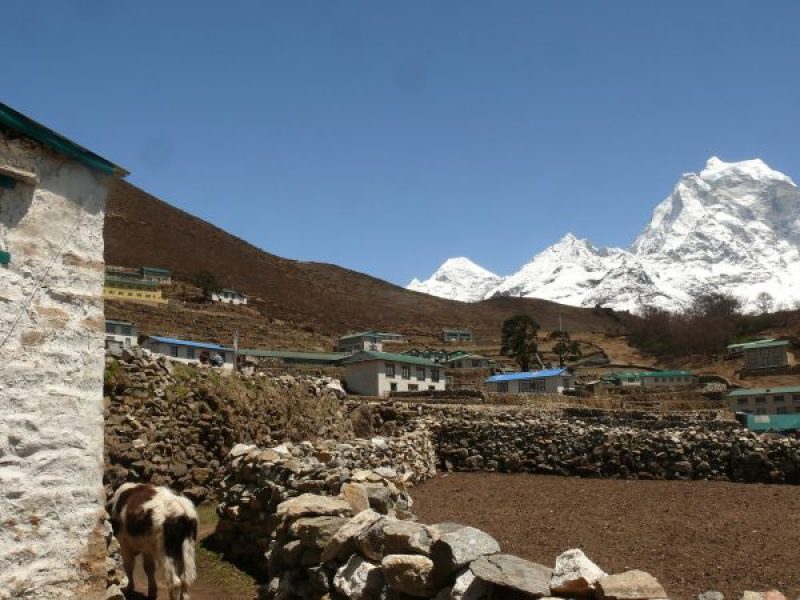
The journey takes several days, allowing for gradual enjoyment of the natural beauty. Phortse offers traditional tea houses and lodges, making it an unforgettable adventure in the region. Trekkers start their journey from Namche Bazaar, the gateway to Mount Everest, through Mong La and Phortse Tenga.
They can then trek to Gokyo village or Phortse village, taking 8-9 hours. Phortse offers stunning mountain vistas and alpine woods, with numerous outdoor adventures, including mountain climbing and sightseeing. The area is known for its openness and friendly Sherpa people.
Overview Of Accommodations
Accommodations in Phortse Village are simple yet enchanting, reflecting the authentic Sherpa lifestyle. Tea houses line the village paths, offering cozy rooms adorned with local decorations and views of towering peaks.
These lodges are often family-run, serving delicious dal bhat (a traditional Nepali meal) and warm chang (local barley beer). Those who prefer a closer communion with nature should not miss the experience of camping under the starlit sky amidst the towering Himalayan giants.
Phortse Village isn’t just a stop on a trek; it’s a cultural immersion into the heart of Nepal’s Sherpa community. As you traverse ancient trails and visit local monasteries echoing with chants, you’ll discover a world where tradition meets unparalleled natural beauty.
In Phortse Village, time seems to slow down, allowing travelers to savor each moment, a testament to the enduring attraction of the Himalayas and the determined spirit of its people.
Frequently Asked Questions (FAQs)
1. What makes Phortse Village unique compared to other destinations in Nepal?
Phortse Village stands out for its authentic Sherpa culture and stunning Himalayan vistas. It offers a more serene and less crowded experience compared to more popular trekking hubs like Namche Bazaar.
2. Is Phortse Village suitable for all types of travelers?
Phortse Village caters to a variety of travelers, from avid trekkers seeking adventure to cultural enthusiasts interested in experiencing Sherpa traditions. The trails can be challenging due to altitude, so proper preparation and acclimatization are crucial.
3. How can I best prepare for a trip to Phortse Village?
Preparation should include obtaining necessary permits, such as the Sagarmatha National Park Entry Permit, and ensuring proper gear for trekking in variable Himalayan conditions. Acclimatization is key to enjoying the journey safely and fully appreciating the natural beauty of the region.
4. What is the best time of year to visit Phortse Village?
The ideal time to visit Phortse Village is during the spring (March to May) and autumn (September to November) seasons when the weather is generally clear and stable. These periods offer optimal trekking conditions and stunning views of the Himalayan peaks.
5. How can I contribute positively to the local community during my visit?
Travelers can support the local economy by staying at family-run tea houses, purchasing handmade crafts from Sherpa artisans, and respecting cultural norms and traditions. Responsible tourism helps preserve the integrity of Phortse Village for future generations.

Comment (0)